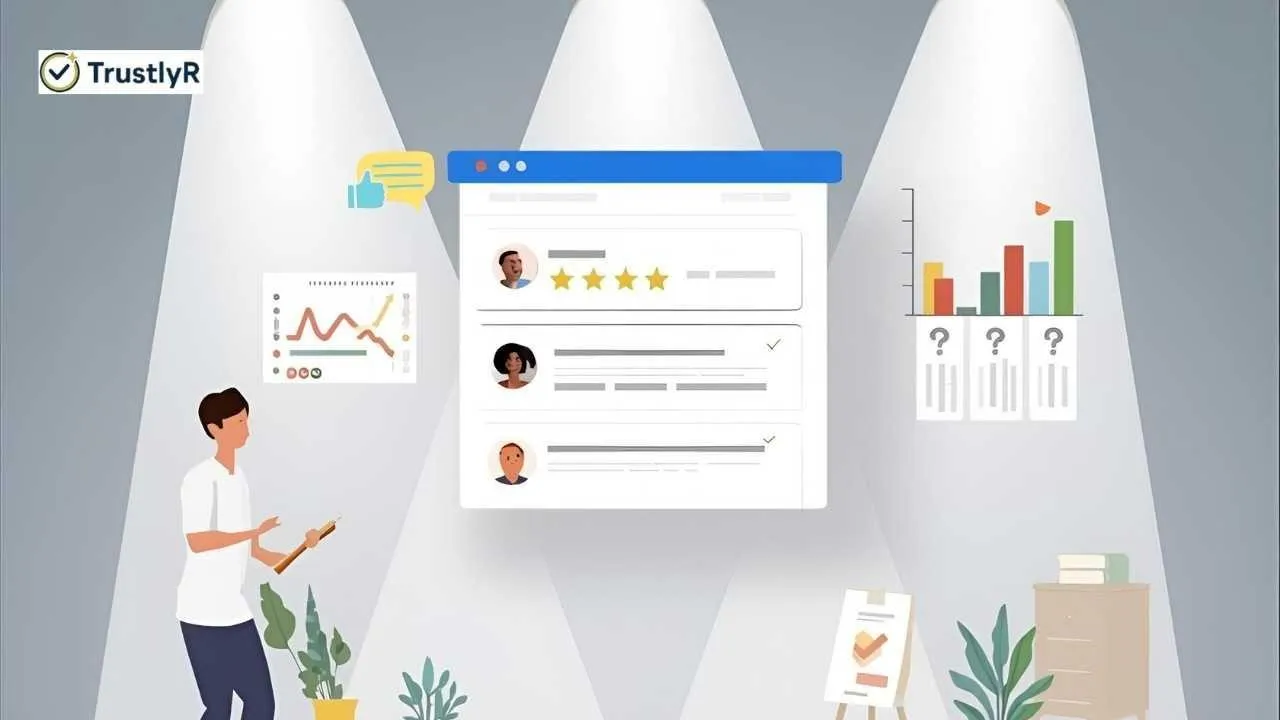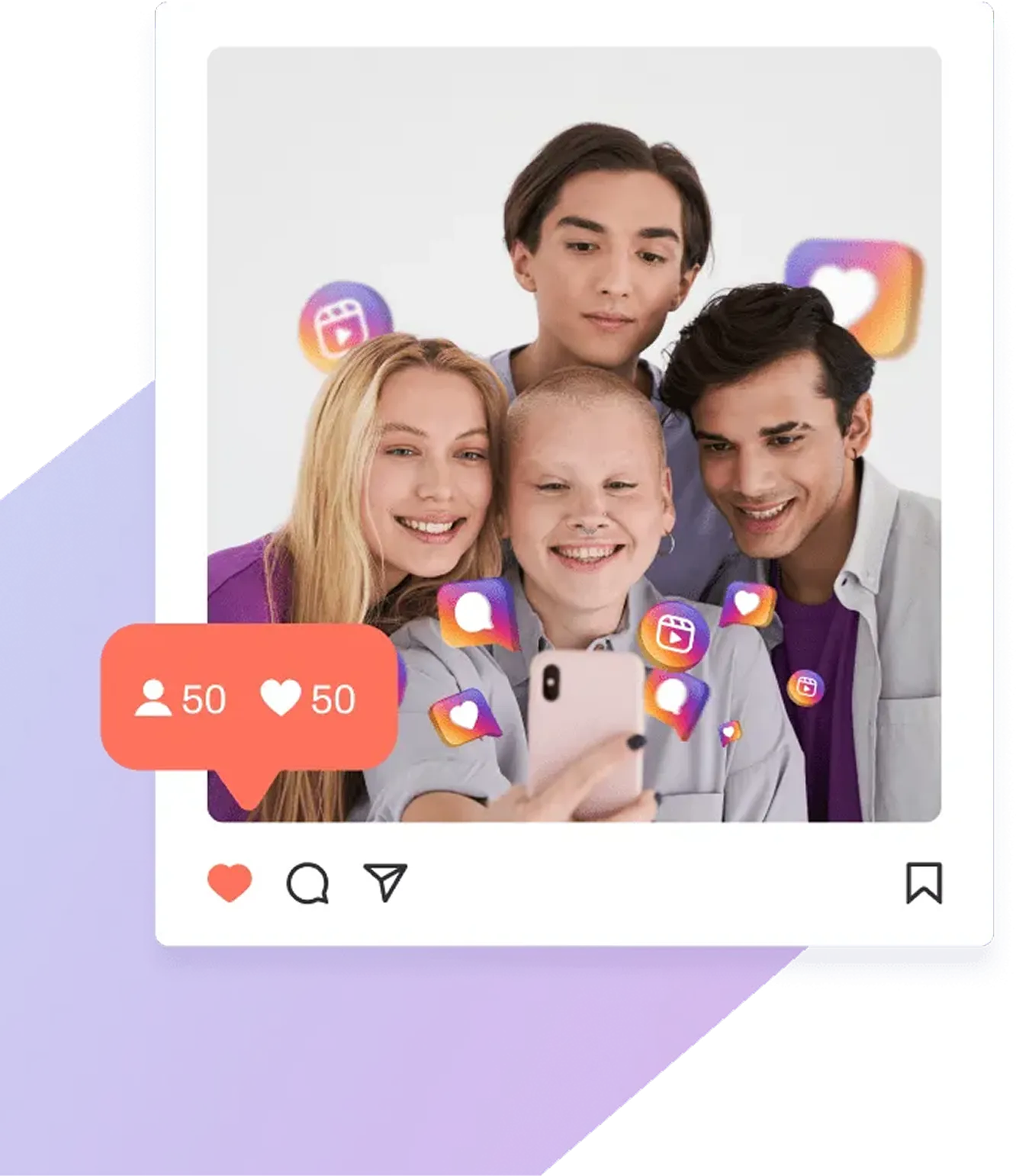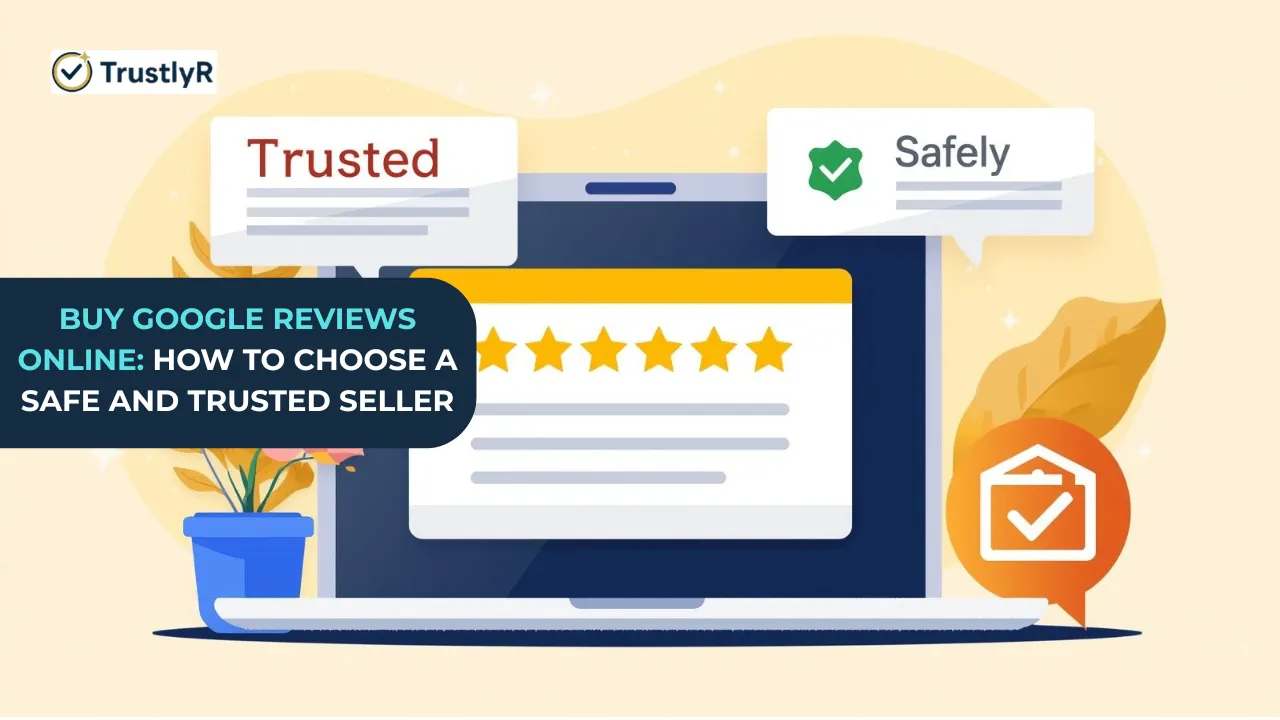Google reviews serve as public proof of how you treat your customers. But your responses are proof of how you handle feedback. Done well, replies turn browsers into buyers, retain unhappy customers, and improve Local SEO and Google rankings. Responses convince customers that the business cares about them and that they are well taken care of.
Replies also turn feedback into quick fixes, showing potential customers you listen and improve, leading to better customer service. This guide explains why replying to reviews matters, what to say, how fast to respond, and how to scale replies as your review volume grows. Written by TrustlyR, a platform that provides businesses with building business reputation, reviews management, and providing authentic and verified reviews, ethically.
Suppose you are a business looking to boost your online presence. Look no further, TrustlyR has got you covered with genuine and verified reviews. You can easily obtain Google reviews to improve your GMB ranking and strengthen your local credibility with us.
Why Replying to Google Reviews is Essential
1) Visibility & Local SEO
Google encourages owner/business responses. Active profiles—with fresh reviews and thoughtful replies—tend to perform better in Maps and local search engines. Replies add context, keywords (in a natural way), and recency signals. Always ask your customers if they liked their service and encourage them to leave a Google review.
2) Conversion & trust
Prospects read negative reviews—and your replies. A soft, solution-oriented response can neutralise concerns and recover the sale before someone ever calls.
3) Retention & recovery
A fast, empathetic reply (ideally within 24–48 hours) often turns a frustrated reviewer into a repeat customer.
4) Insights & operations
Reviews surface patterns—wait times, availability, pricing confusion. Replies acknowledge issues and show you’re fixing root causes.
5) Brand voice & credibility
Responding consistently demonstrates professionalism and values, including transparency, fairness, and accountability.
Principles of Great Response
- Confirm & Acknowledge: Thank the customer for their experience.
- Add specifics: Refer to the date, service or the staff, keeping it classy.
- Resolve: Offer a strong next step or insight into what’s coming up.
- Empathise: Keep the tone calm, professional, and short.
How to be compliant with Google’s policies when writing responses:
- Never offer incentives to customers for editing/removing reviews.
- Avoid sharing personal information or private details on public platforms.
- If a review appears fake or violates our policy, flag it and provide a brief response with an empathetic and professional tone.
- Move sensitive conversations offline (via email/phone) after acknowledging them publicly.
How to Structure a Strong Reply
The reply should consist of 20-80 words and be calm, polite, and professional. The response serves as a public image for your potential customers, helping them connect with your business through proper acknowledgement. Here are a few points you can keep in mind while writing a reply:
- Thank + name of the customer (if shown)
- Details of the feedback provided (what they praised/what went wrong)
- Action (what you did wrong/what you’ll do next to improve)
- Invitation (return visit or direct contact)
Example:
Thank you, {Name}. We work hard to deliver {service/product} exactly as you described. I’ve shared this with {staff/team}—see you again soon.”
Ready Replies you can use for Your Business
Positive Replies (5-Star Rating)
● General Praise
“Thanks, {Name}! We’re delighted that you enjoyed our {service/product}. We’ve shared your note with {staff/team}—you made our day. We are looking to see you soon!”
● Staff shout-out
Thank you for the five stars, {Name}. {Staff Name} will be delighted to hear this. Thanks for trusting us with {service}—we are looking forward to your next visit.”
● Quick Service
“Thanks for the positive response, {Name}. We’ve been working hard on improving process/wait times, so your feedback is greatly appreciated for further improvement. Thanks for the five stars!”
● First-time Customer
“Welcome, {Name}—and thank you! We’re glad your first {service/product} with us was smooth. Please let us know if you have any questions before your visit. We are happy to help.”
● Detailed Photo Review
“Those photos are fabulous, {Name}—thanks for sharing them! Glad we lived up to your expectations. We look forward to welcoming you back soon.”
● Returning Customer
“Grateful for your continued support, {Name}. Consistency matters to us, and we’re pleased to have hit the mark again with {service}. See you next time!”
● Events Booking
“Thanks for choosing us for your {occasion}. Our team loved hosting you. If you’re planning another {event}, we’ll make it even better.”
Mixed Replies (3-4 Star Rating)
● Great Experience, Small Issue
Thanks for the insightful note, {Customer Name}. Love that the services landed well. We’ve taken your point on the issue faced and are updating to prevent a repeat.
● Wait Time Concern
Thanks for the feedback, {Name}. We hear you on the wait. We are adding {more staff/extra appointment slots} and are in the process of adjusting scheduling. Next visit should feel quicker.
● Pricing Issue Note
Totally appreciate it, {Name}. We provide clear, written quotes with no hidden charges. We are more than happy to review your estimate—please email {contact} with {invoice#/date} and we’ll go through it line by line.
● Expectation Mismatch
Thanks for the honest feedback, {Name}. Glad {positives} landed well. We’re updating the {menu/info/process} so that expectations align with the outcome next time. We’d love to host you again once it’s live.
● Service Nearly Perfect
“Thanks, {Name}—and for noting where we can do better on {detail}. We’ve added this to our training checklist. We hope to earn your 100% trust next time.”
Negative Replies (1-2 Star Ratings)
● Service Failure & Apology
“Hi {Name}, we’re sorry your {service/product} missed the mark. This isn’t our standard. We’ve checked in with the team and would like to make this right—please reach out to us at {contact}.”
● Staff Interaction Complaint
“Hi {Name}, we’re disappointed to hear this and take it seriously. We’re working on this and reviewing with the team. Could we speak further regarding this concern at {Contact}?”
● Cleanliness Concern
“Thank you for pointing this out, {Name}. Cleanliness is mandatory, and this is not an experience we would want for our valued customers. Could we connect for a quick call at {Contact}? We would be happy to help!”
● Quality or Defect Issue
“Thanks for flagging this, {Name}. We’re investigating the issue and can arrange a replacement. Please email {Contact} with your order details.”
● Billing Confusion
“Sorry for the confusion for the {Charge}, {Name}. We’re happy to review the invoice and make corrections. Please send details to {Contact} so we can resolve this.”
● Safety or Serious Issue
“Hi {Name}, we take your concern very seriously and have begun an internal review immediately. Please contact {Manager + Phone} so we can address this thoroughly.”
● Business Owner takes over when the Situation is out of Control
“Thank you for sharing, {Name}. We’re sorry we let you down and appreciate the chance to improve. We’ve escalated this to the manager. Please contact us at {contact}, we’ll work on a resolution.”
Follow-ups & Updates Replies
● Issue resolved
“Thanks for working with us on the call, {Name}. We’re glad we could figure out {issue} with {resolution}. Your feedback helped us improve our process for better service.”
● The Reviewer Updated the Rating.
“Appreciate the update, {Name}! We’re grateful for the second chance and happy the {service/product/fix} worked. Thanks for trusting in us.”
Possible Mistake / Fake Reviews Replies/ No Customer Record
● No Record of Visit
“Hi {Name}, we can’t find a visit/order under this name and date. Could you email us with details so we can investigate? We want to help if this relates to us.”
● Wrong Location or Competitor Mix-up
“Thanks for flagging this, {Name}. It looks like this may refer to a different location. We’re {Business Name}, located at {Address}. If we’ve missed something, please contact {contact}.”
Do’s & Don’ts when Writing a Response
Do’s
- Reply within 24–48 hours (set alerts on Google Business Profile).
- Personalise briefly: refer to the service, date, or staff.
- Move challenging issues offline after acknowledging.
- Keep replies short (within 20–80 words) and readable on mobile.
- Share feedback patterns with your team on a weekly basis.
Don’ts
- Share personal information, argue, or assign blame publicly.
- Offer discounts/gifts in exchange for edits (Google policy risk).
- Paste the same set of replies to every review.
- Over-optimise with keywords—keep it natural.
Conclusion
Responding to Google reviews isn’t “extra credit”—it’s table stakes for modern discovery, trust, and retention. Hence, with a simple framework and the templates above, your team can reply faster, calmer, and more effectively—turning everyday feedback into visible proof that you listen and improve.
If you have trouble scaling your business or getting Google reviews, use TrustlyR to buy Google reviews, consolidate feedback, and deliver policy-compliant, approved responses at speed.








